Mystery of Yonaguni: Ancient structures or natural formations?
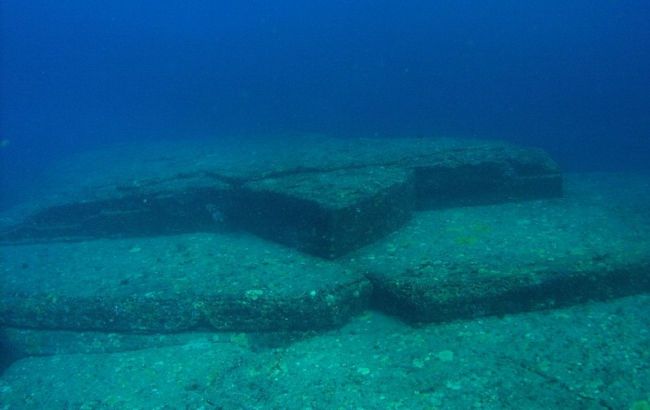 Yonaguni underwater complex (photo: Wikipedia)
Yonaguni underwater complex (photo: Wikipedia)
The Yonaguni Underwater Complex off the coast of Japan has fascinated researchers and tourists for decades with its mystery and grandeur. Some researchers believe these stone formations are natural structures, while others are convinced they are remnants of an ancient civilization.
RBC-Ukraine reveals the secrets and mysteries surrounding the Yonaguni underwater structures.
Discovery and first impressions
The complex was accidentally discovered by Japanese diver Kihachiro Aratake in 1986. During a dive, he noticed massive stone structures with straight, right-angled corners and steps, resembling architectural elements similar to pyramids.
These findings quickly caught the attention of scientists, archaeologists, and enthusiasts. Particular interest is drawn to features resembling roads, terraces, stairs, and even pools, suggesting the possibility of human craftsmanship in creating the complex.
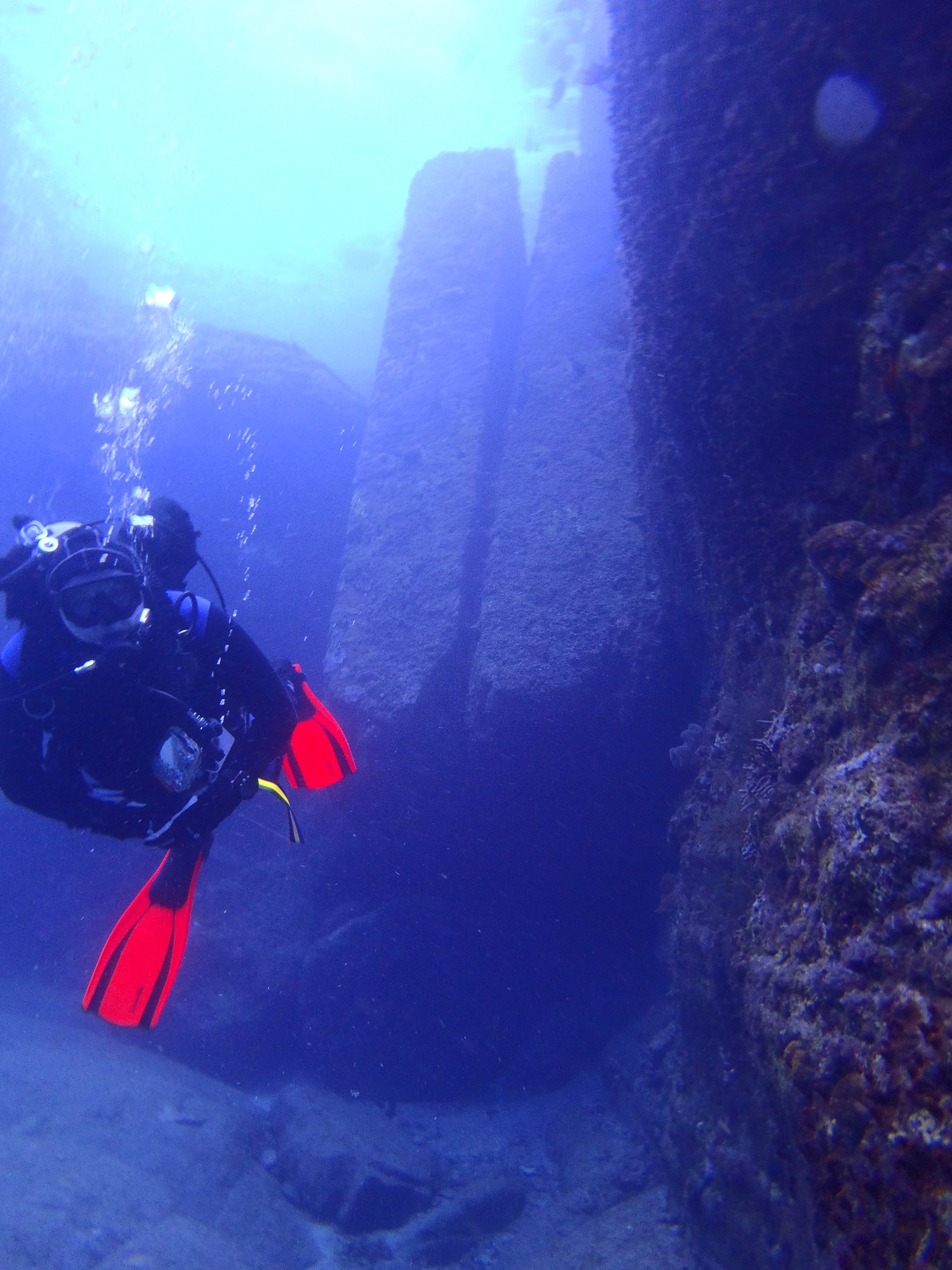
Megalithic twins (photo: Wikipedia)
Archaeological research and controversies
Scientists studying the complex have not reached a unanimous conclusion. Some archaeologists and geologists, including Professor Robert Schoch from Boston University, argue that the structures could have formed naturally due to faults and sandstone erosion.
In his view, the underwater formations of Yonaguni are not artificial, but rather the result of geological processes.
However, other researchers point to various features of the complex that could suggest a man-made origin, including polished stones, stairs, and even signs of stone processing.
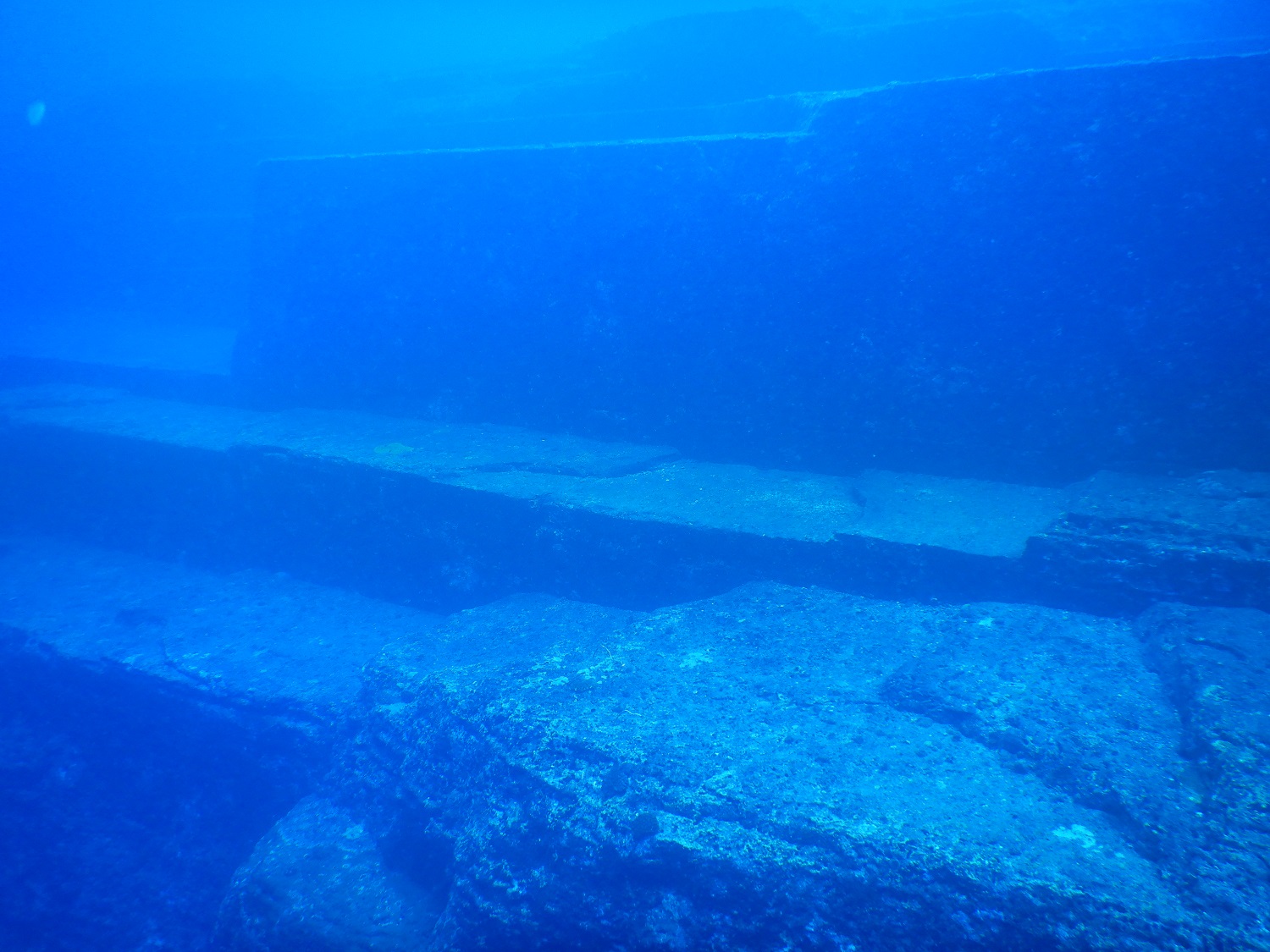
Yonaguni stone terraces (photo: Wikipedia)
Hypothesis of an ancient civilization
Supporters of the theory of human origin believe that the Yonaguni pyramids are the remnants of an ancient civilization, possibly a predecessor to Japanese culture or even Atlantis.
They suggest that the complex could have been created during the last glacial maximum, when sea levels were much lower, and the area around modern Yonaguni could have been dry land.
Some discoveries, such as possible "roads" and "pools," lead to the idea that this was an important center of a civilization that disappeared after the sea levels rose.
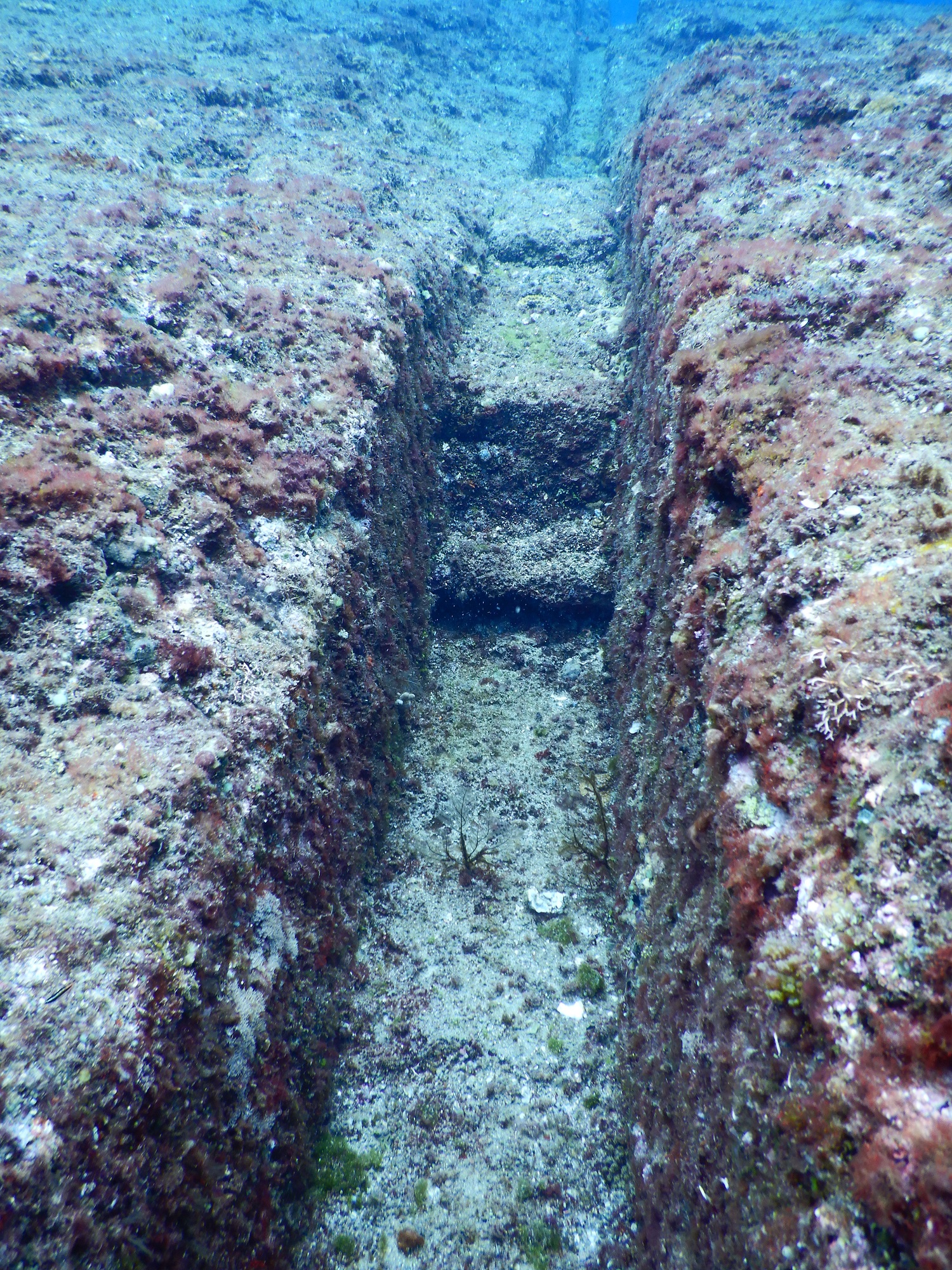
Hypothetical "water channel" (photo: Wikipedia)
Natural formations or evidence of human activity
Scientists continue to debate the origin of the Yonaguni pyramids. According to one theory, the region's geological conditions, particularly its active seismic activity, could have contributed to the formation of sharp, even edges that resemble man-made structures.
However, evidence suggests possible signs of human activity, such as holes for posts and flat surfaces. The debate continues, and there is still no official conclusion regarding the origin of these underwater structures.
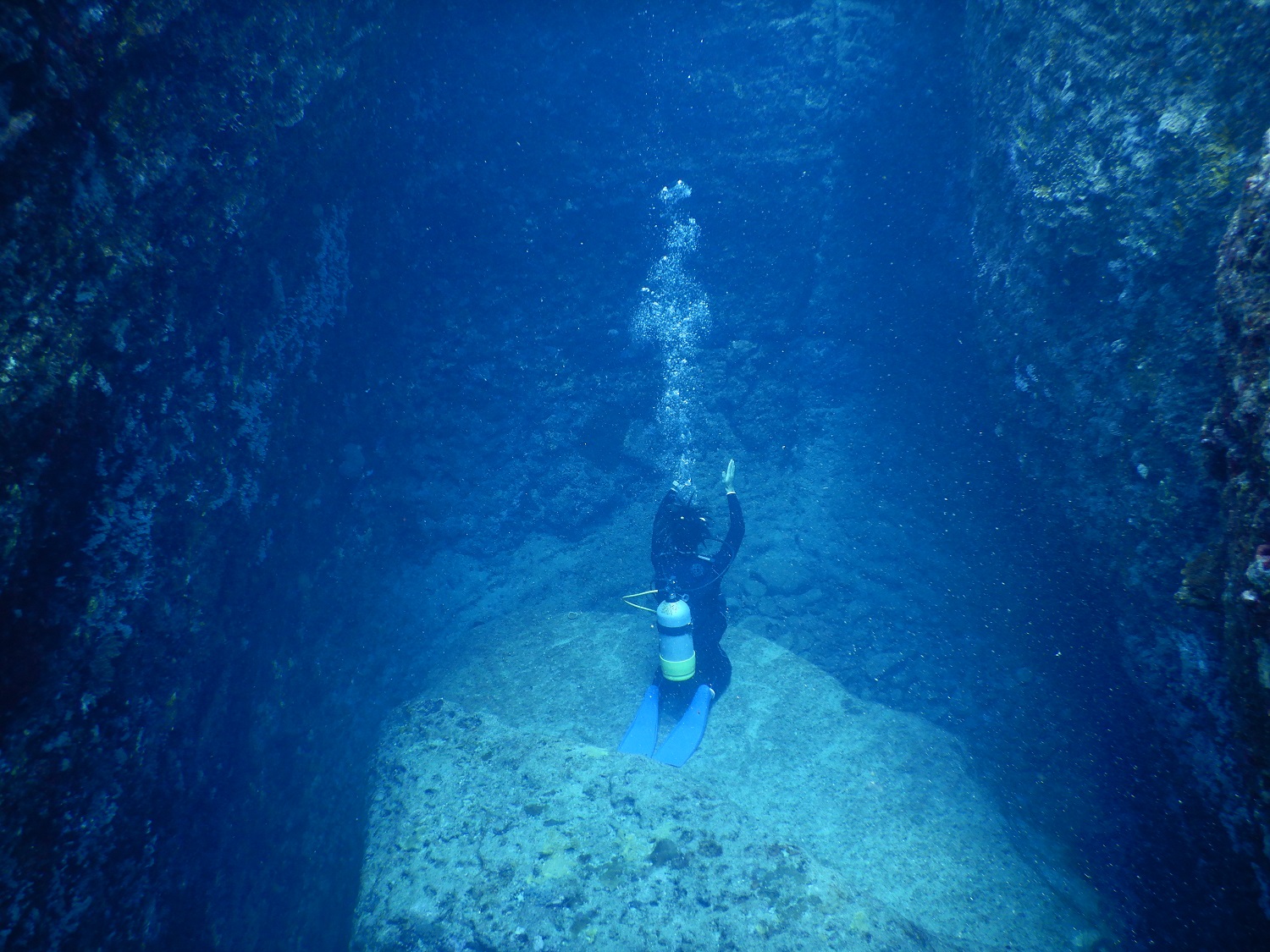
Cross crack (photo: Wikipedia)
Popularity among tourists and researchers
The Yonaguni pyramids have become a popular destination for divers worldwide who wish to see the mysterious ruins firsthand. This site also attracts enthusiasts of mysteries and paranormal phenomena, who believe that Yonaguni could be evidence of unknown cultures.
Despite the lack of official recognition of these structures as cultural heritage, they remain one of the most intriguing archaeological mysteries, continuing to spark interest and research.
Earlier, we wrote about the 5 most intriguing anomalous places on the planet that are more fascinating than the Bermuda Triangle.
Sources: Rough Guides, Time Out, Wikipedia.

